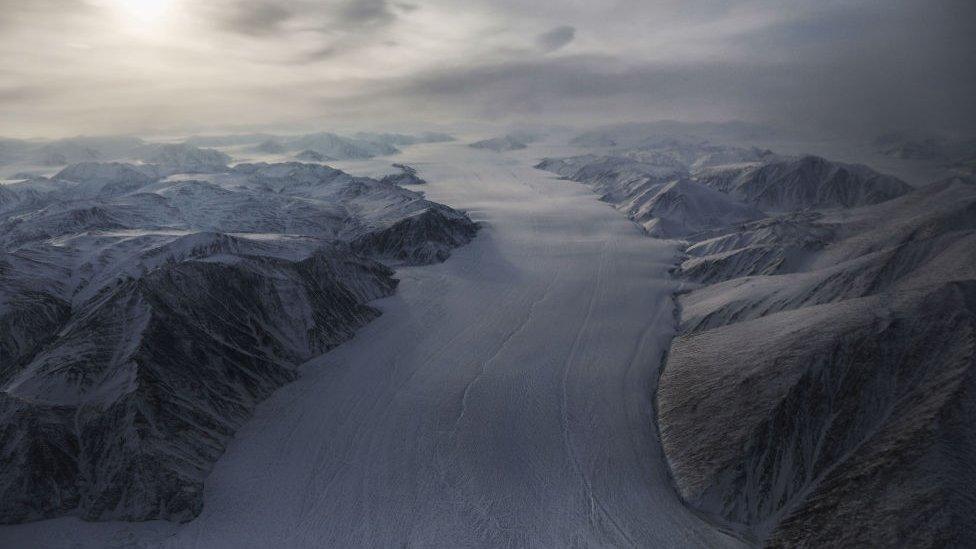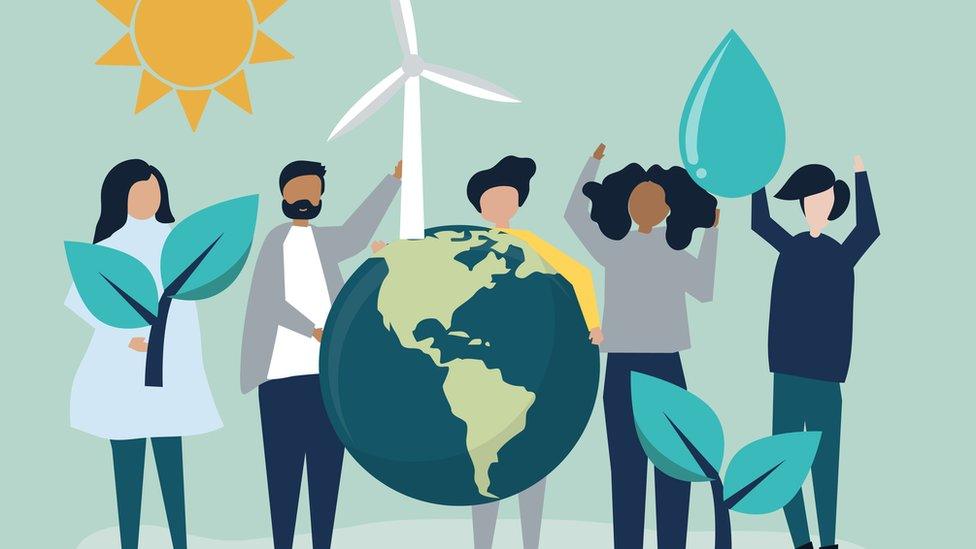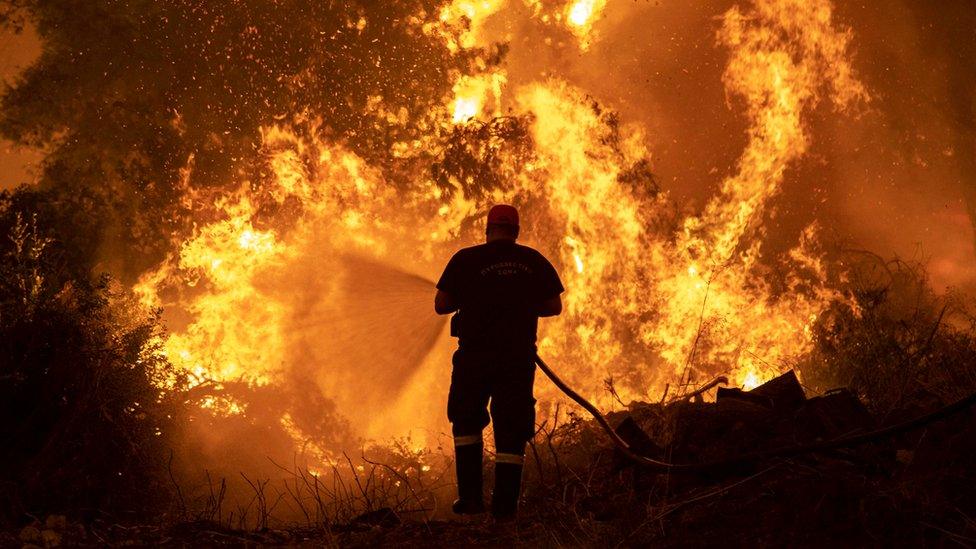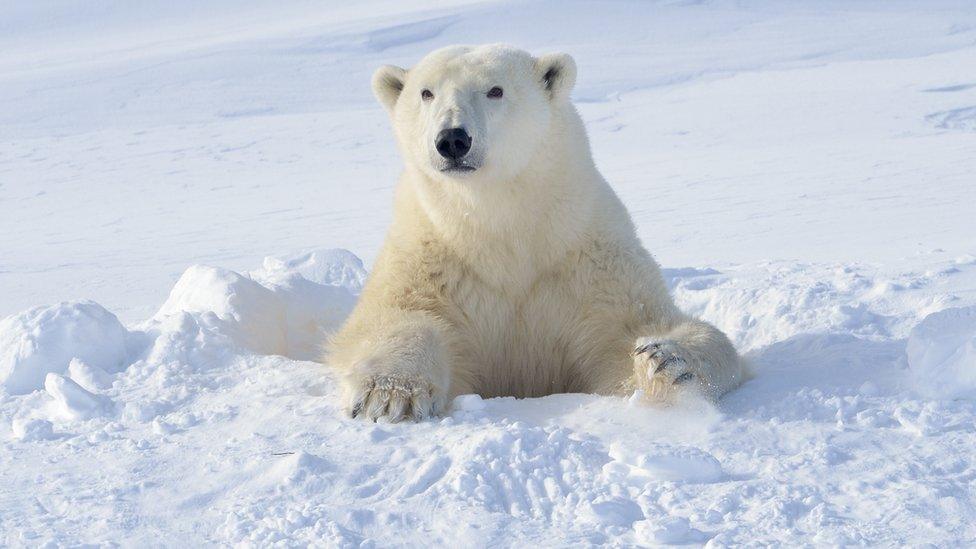Climate change could make rain more common than snow in Arctic
- Published
- comments

There will be more rainfall than snowfall in the Arctic decades faster than scientists previously thought, according to new research.
Presently, more snow falls in the Arctic than rain. However, this could be reversed by the by the end of the century if the planet warms at its predicted rate.
A 2020 study by the United Nations found that the planet could be 3 degrees Celsius warmer by 2100 because of human activity burning fossil fuels.
There are steps being made to try and tackle this. At the recent COP26 climate conference, countries made climate pledges which - if followed - should keep global warming below 2.4C.
However, this is still below the target of 1.5C, which scientists say is needed to prevent a "climate catastrophe".
The research - led by the University of Manitoba in Canada - showed the central Arctic will become rain dominated in autumn by 2060 or 2070 if carbon emissions are not cut, instead of by 2090 as predicted by earlier models.
The Arctic - which a polar region in the northernmost part of Earth - is warming more than twice as fast as the global average.
Snow is important in producing sea ice each winter, so less snow means less ice and more heat absorbed by open oceans.
Having less ice is likely to lead to rising sea levels and this then threatens coastal areas which could be flooded or submerged under water.
The snow being replaced by rain can also stop animals from being able to feed. This is because the rain would freeze and cut off the animal's access to vegetation like grass and shrubbery.
Scientists think the rapid heating in the Arctic may also be increasing extreme weather events such as floods and heatwaves in Europe, Asia and North America.
Scientists were shocked in August when rain fell on the summit of Greenland's huge ice cap for the first time on record.
What is being done about climate change?

In 2015, world leaders met in Paris and signed a historic agreement pledging to try to keep the world from warming by more than between 1.5C to 2C.
They said they'd achieve this by cutting carbon dioxide emissions. At the recent COP26 conference in Glasgow it was hoped that an actual blueprint for this would be decided.
However, this didn't happen. Instead, it was agreed that countries will meet next year to try again.
One of the major breakthroughs at the conference was a new climate cooperation agreement between China and the USA.
The two countries are the biggest CO2 emitters in the world and they've now promised to co-operate more about climate change over the next decade.
Leaders from more than 100 countries - with about 85% of the world's forests - also promised to stop deforestation by 2030 at the conference.
- Published9 August 2021

- Published20 July 2020

